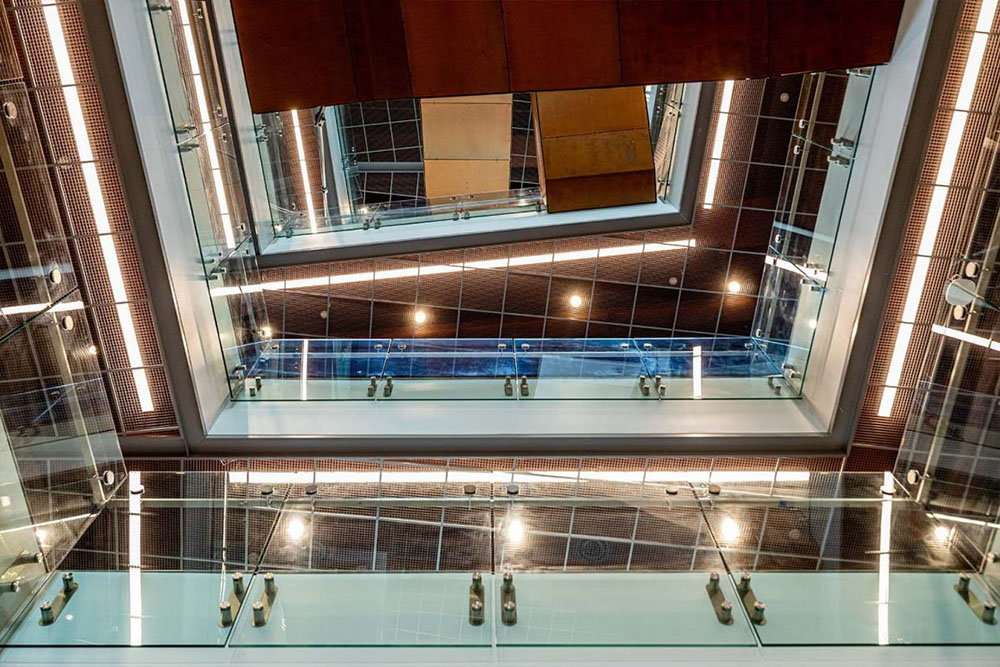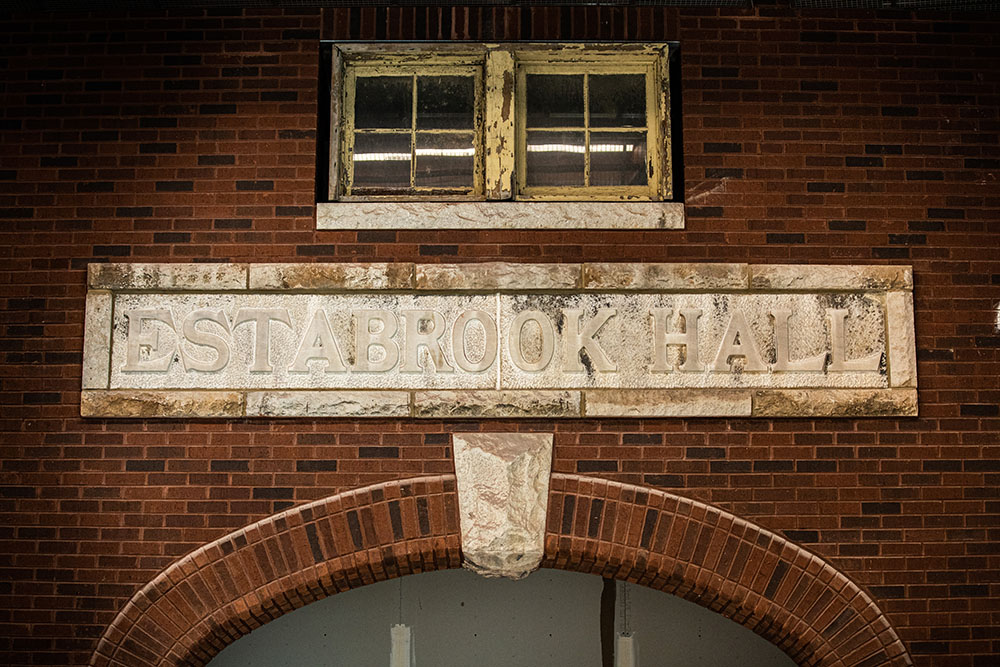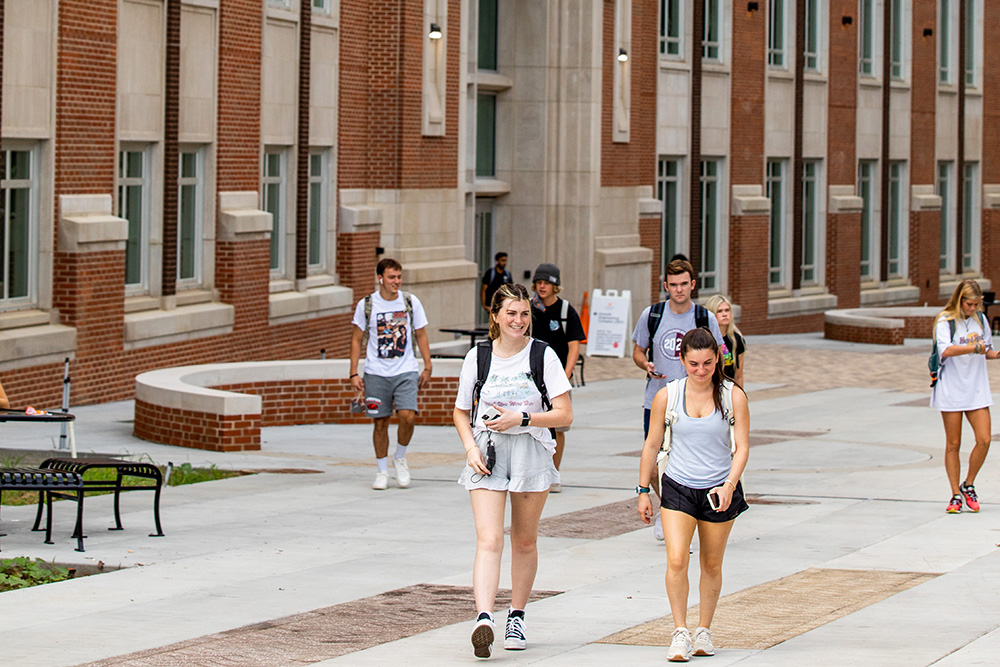The Department of Nuclear Engineering will finish moving into their new space in ZEC by early November.
As a figurative Gateway to Engineering, the complex is a transformative facility designed to welcome and immerse students into the community of engineers—with spaces that advance the state-of-the-art of education and research, including first-year engineering programs, interactive and collaborative maker spaces, and administrative offices, in addition to nuclear engineering.
ZEC spaces are built with growth in mind for researchers at undergraduate and graduate levels. Flexible-use labs throughout the complex employ a variety of utilities, benching, and mechanical infrastructure, allowing for research in a wide range of engineering sub-disciplines.
The department can now house its faculty, classes, research, and staff in one building, ending decades of having spaces stretched across multiple buildings: the Pasqua Nuclear Engineering Building, the Science and Engineering Research Facility, Ferris Hall, the Howard H. Baker Jr Center for Public Policy, the Joint Institute for Advanced Materials, and, most recently, in the building that previously housed the Department of Earth and Planetary Sciences.
“It’s not just that being together will be nice, but rather it’s more about what the new space will allow us to accomplish,” said Department Head Wes Hines, who is also both a Chancellor’s Professor and Postelle Professor in the department. “We will have three times as much space, with twenty-three new state-of-the-art laboratories dedicated to nuclear engineering, classrooms, offices, study areas, and lounges. This move will improve and enhance everything we do, not just now, but far into the future.”
It opened with 29 labs equipped with fume hoods and the ability to add 30 more as new research calls for them. These include 17 wet labs, with chemical usage expected; nine dry labs, with non-chemical usage expected; and seven support labs that offer tools and equipment that enhance the work in the other labs.
Eventually, the building will also house a fast neutron source, allowing students and researchers to simulate neutron spectra of future reactors to improve modeling codes and capabilities.
“No one else in the country has a fast flux facility like that,” said Hines. “It will help us prepare our graduates for work in a variety of nuclear-related fields in ways that other universities can’t, while at the same time presenting faculty with an avenue to conduct novel research. We’re excited about the possibilities, to say the least.”
Spaces adjacent to the labs are designed to encourage collaborative moments, even when researchers are not actively engaged in their work.
“All kinds of different sorts of utility capabilities are met, to be able to adapt and house different strategic initiatives,” said Bill Dunne, associate dean for research and facilities. “At the east end of the building on every floor, there is a kitchenette area and a small conference room. They’re quite informal and meant to create the opportunity for interactions and discussions and doing simple things like eating lunch or dinner.”
This inherent design for innovation and collaboration ensures that the Zeanah Engineering Complex will remain a launching point for our Engineering Vols to light the way in their professional futures.
A “Bumpy” Ride Advances Fusion
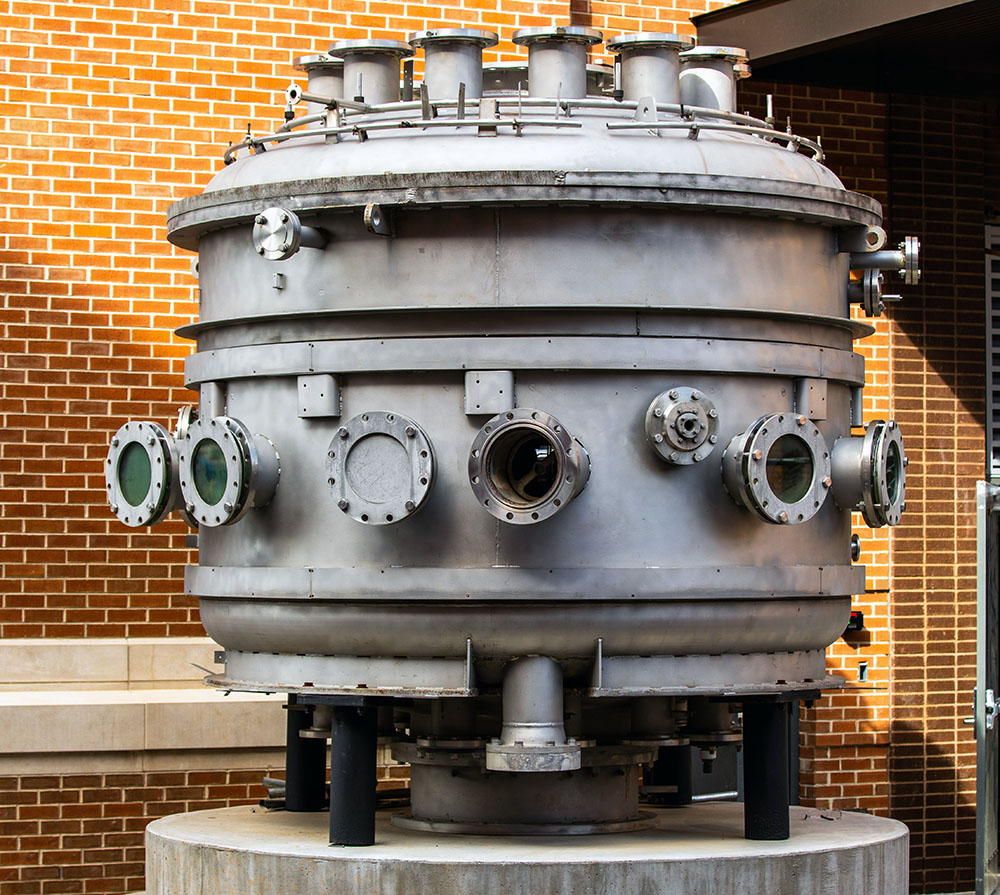
Fusion energy holds the promise of potentially limitless, carbon-free power and has been a major topic within nuclear engineering for decades.
A giant machine located just outside the southeast corner of the new complex, known as a bumpy torus, is an early prototype of a fusion reactor. Its magnetic arrays help close the circular reactor chamber, or torus, which has been said to vaguely resemble a doughnut.
The “bumpy” part of the name is due to the behavioral nature of the plasma produced within—in particular, its tendency to pool and flow irregularly.
The concept was that the magnetic mirror arrays would help prevent leakage of particles that might otherwise be lost during operation due to small gaps in the machinery. The design also allowed for easier maintenance and replacement of parts within the reactor chamber.
While research on different models of bumpy torus—like fusion devices continued into the mid-1980s, including notable efforts at Oak Ridge National Laboratory, this particular device came to UT from NASA’s Lewis Research Center in Cleveland, Ohio.
Although other devices—tokamaks and, less frequently, stellarators—have been the focus of fusion efforts in recent decades, the bumpy torus still holds an important place in the quest to solve the fusion energy question.
The opening of the new complex and the consolidation of the department from several buildings into one provided the perfect opportunity to display it and to salute the work that paved the way for where we now stand.
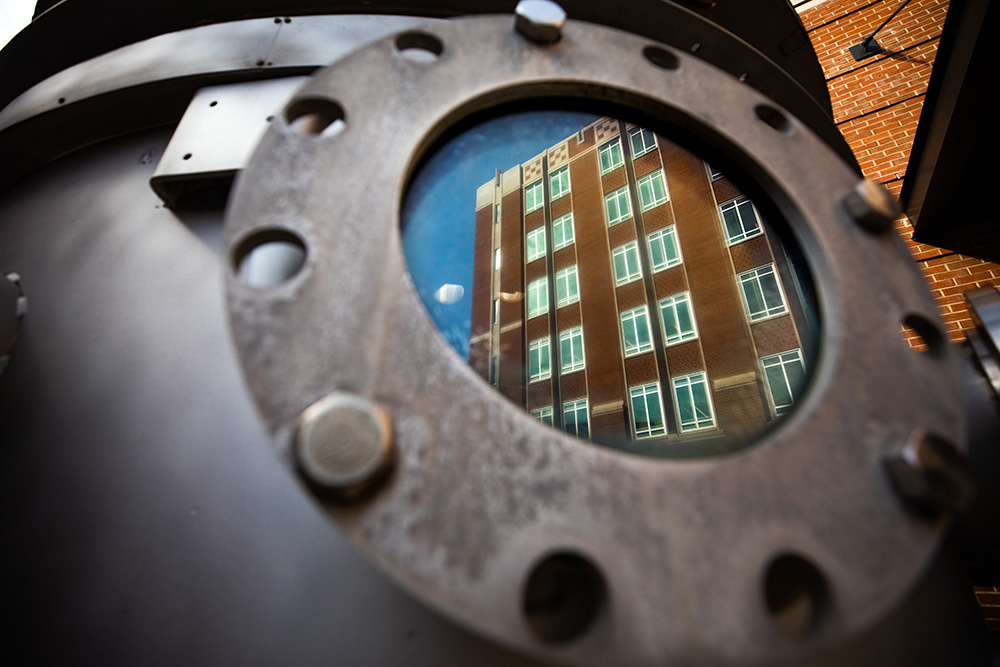
Nuclear Engineering Rooms Named in ZEC
The Zeanah Engineering Complex (ZEC) has approximately 170 nameable spaces available throughout the building with 11 of those named so far. Three of those spaces have been named in the Nuclear Engineering Department.
Dr. Cecil & Kristine Thomas Office
Cecil Thomas earned a BS (’64), MS (’66), and PhD (’71) in nuclear engineering, all at UT. He worked in nuclear engineering at Tennessee Valley Authority and retired from the Nuclear Regulatory Commission, where he held a number of senior management positions. Kristine Thomas earned a BS in nuclear engineering at the University of Michigan and held various licensing positions at the NRC. Together they established the Nuclear Engineering Excellence Endowment.
Pietro F. Pasqua Classroom
In honor of Dr. Pietro “Pete” F. Pasqua (1922-1992), the first head of the first Department of Nuclear Engineering in the nation, established at UT in 1957. Among his many outstanding contributions to education, he played a role in founding the Nuclear Division of the American Society of Engineering Education and for many years served on the Oak Ridge Associated Universities Council and Alcoa Board of Education.
Mark Lane Williams Group Study Room
Mark Lane Williams (’79), a distinguished scientist in nuclear engineering, developed methods for contribution transport theory, sensitivity and depletion perturbation theories, and thermal reactor physics. He served as director of the Nuclear Science Center at Louisiana State University and as a professor at UT. He was a distinguished researcher at Oak Ridge National Laboratory and patented a radiation emitter for cancer therapy. He was elected a Fellow of the American Nuclear Society in 2012 and received the prestigious Eugene Wigner Reactor Physicist Award in 2016. Gayle Williams (’77) established the Dr. Mark Lane Williams Endowed Scholarship in Nuclear Engineering in his memory.
